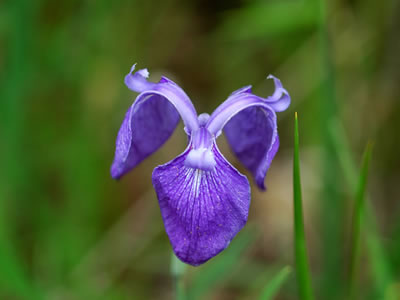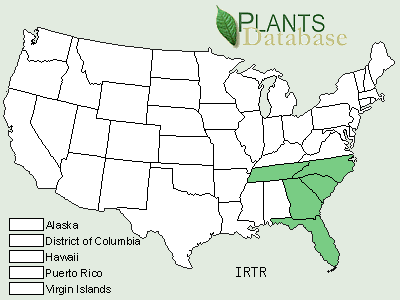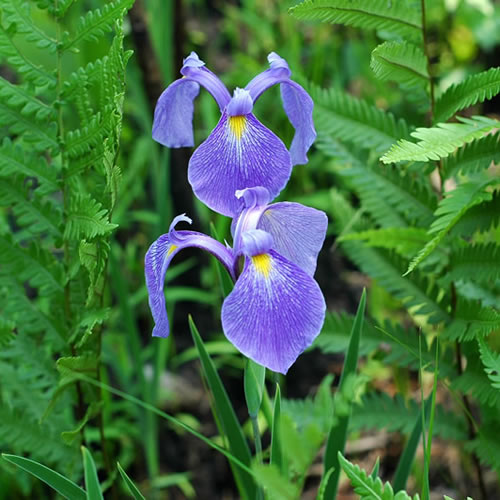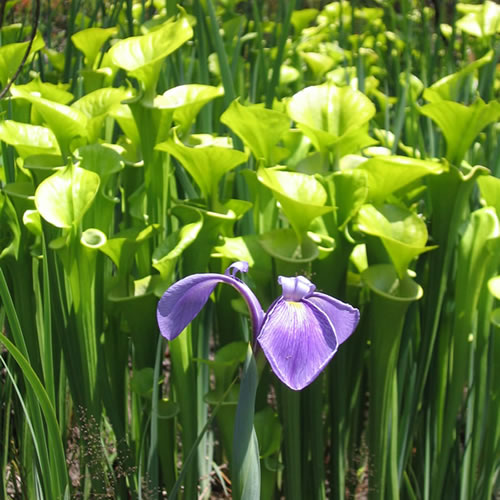Our Native Irises: Blue Flag Irises
Iris tridentata: Savannah Iris
Savannah iris occurs from North Carolina to Florida on the coastal plain and in the Tennessee interior.
Iris tridentata flowers are purple-blue. The sepals are widely spreading and then arching downward with prominent dark purple veins and a white to yellow signal. The petals are greatly reduced, not exceeding the base of the sepals. The inflorescence is one-flowered, the flowering stalk taller than the attending leaves. The leaves are bright green, basal and upright, from extensively branched, wandering rhizomes, rooting at the nodes and forming loose colonies.
Iris tridentata is found growing in shaded, rich, swamps and wetlands in the coastal plain with an interior disjunct population in Tennessee.





